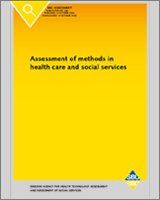|
Physical exercise compared with no treatment, end of treatment
|
| Width of DRAM | 1 RCT n=17 | MD (SD): –1.09 cm (0.63) vs. –0.13 cm (0.31) (p≤0.05) | Very low3 ⊕◯◯◯ |
| Resolution of DRAM (<2 fingerwidths) | 1 RCT n=96 | RR: 1.11 (0.5 to 2.49) A (n.s., p>0.05) | Very low3 ⊕◯◯◯ |
| Physical function – Pelvic floor (PFDI-20) | 1 RCT n=13 | MD: 2.80 (–10.01 to 15.61)E (n.s., p>0.05) | Very low3 ⊕◯◯◯ |
| Disability – Pain related disability (RDQ) | 1 RCT n=13 | MD: –0.30 (–5.63 to 5.03)F (n.s., p>0.05) | Very low3 ⊕◯◯◯ |
|
Physical exercise in combination with taping compared with no treatment, end of treatment
|
| Reduction in width of DRAM | 1 RCT n=12 | MD (SD): –1.07 cm (0.66) vs. –0.13 cm (0.31) (p≤0.05) | Very low3 ⊕◯◯◯ |
| Physical function – Pelvic floor (PFDI-20) | 1 RCT n=10 | MD: 14.80 (–11.65 to 41.25)E (n.s., p>0.05) | Very low3 ⊕◯◯◯ |
| Disability – Pain related disability (RDQ) | 1 RCT n=10 | MD: –1.00 (–6.26 to 4.26)F (n.s., p>0.05) | Very low3 ⊕◯◯◯ |
|
Taping compared with no treatment, end of treatment
|
| Width of DRAM | 1 RCT n=15 | MD (SD): –0.29 cm (0.28) vs. –0.13 cm (0.31) (n.s., p>0.05) | Very low3 ⊕◯◯◯ |
| Physical function – Pelvic floor (PFDI-20) | 1 RCT n=9 | MD: 10.40 (–3.67 to 24.47)E (n.s., p>0.05) | Very low3 ⊕◯◯◯ |
| Disability – Pain related disability (RDQ) | 1 RCT n=9 | MD: –0.30 (–6.99 to 6.39)F (n.s., p>0.05) | Very low3 ⊕◯◯◯ |
|
Physical exercise in combination with NMES compared with physical exercise, end of treatment
|
| Width of DRAM | 1 RCT & 1 quasi-RCT n=93 | MD: –0.36 cm (–0.46 to –0.26) | Very low1,2 ⊕◯◯◯ |
| Symptoms – body image (BAS) | 1 RCT n=36 | MD: 0.71 (0.52 to 0.90)B (p≤0.05) | Very low3 ⊕◯◯◯ |
| Physical function – abdominal muscle strength (dynamometer) | 1 RCT & 1 quasi-RCT n=93 | Peak torque (Nm): MD: 5.14 (3.29 to 6.99)C Average power (W): MD: 3.85 (2.64 to 5.07)C Total work (J): MD: 6.05 v(4.14 to 7.95)C Endurance (reps.)D: MD: 8.33 (6.38 to 10.28)C
| Very low1,2 ⊕◯◯◯ |
|
Physical exercise compared with surgical treatment with mesh implant, 3 months after treatment
|
| Physical function – effect of pain on function (VHPQ) | 1 RCT n=57 | No significant difference between the groups for 8/9 items on the VHPQ | Very low3 ⊕◯◯◯ |
|
Physical exercise compared with surgical treatment with suture alone, 3 months after treatment
|
| Physical function – disability (VHPQ) | 1 RCT n=58 | No significant difference between the groups for any of the items on the VHPQ | Very low3 ⊕◯◯◯ |
|
Surgical treatment with mesh implant compared with suture alone, 1 year after treatment
|
| Recurrence of DRAM (≥3 cm) | 1 RCT n=57 | RR: 3.10 (0.13 to 73.12), (n.s., p>0.05)G
| Very low3 ⊕◯◯◯ |
| Physical function – abdominal muscle strength (dynamometer) | 1 RCT n=56 | Difference between groups reported to be n.s. (p>0.05) | Very low3 ⊕◯◯◯ |
| Physical function – abdominal muscle strength (self-reported) | 1 RCT n=56 | Median (SD): 7 (2.62) vs. 8 (2.08) (n.s., p>0.05) | Very low3 ⊕◯◯◯ |
| Physical function – effect of pain on function (VHPQ) | 1 RCT n=56 | No statistically significant difference between the groups for 6/9 items on the VHPQ | Very low3 ⊕◯◯◯ |
| HRQoL (SF-36, reported for 8 subscales) | 1 RCT n=57 | 3/8 subscales (GH, VT & MH) indicate benefit for mesh implant (p≤0.05). | Very low3 ⊕◯◯◯ |
